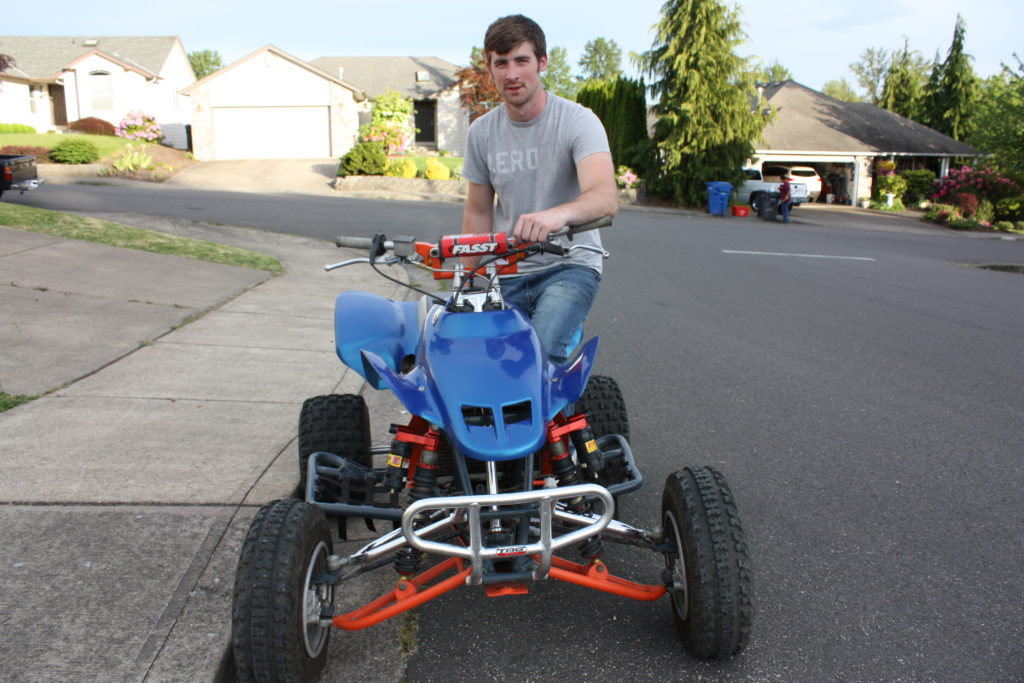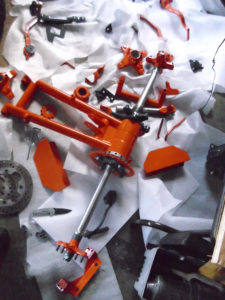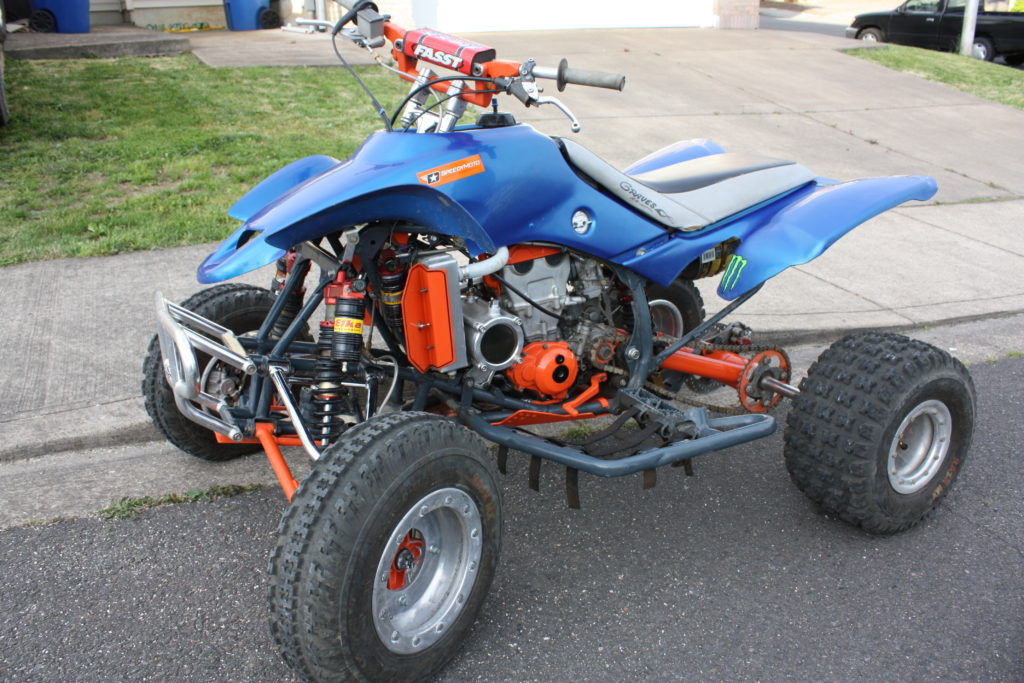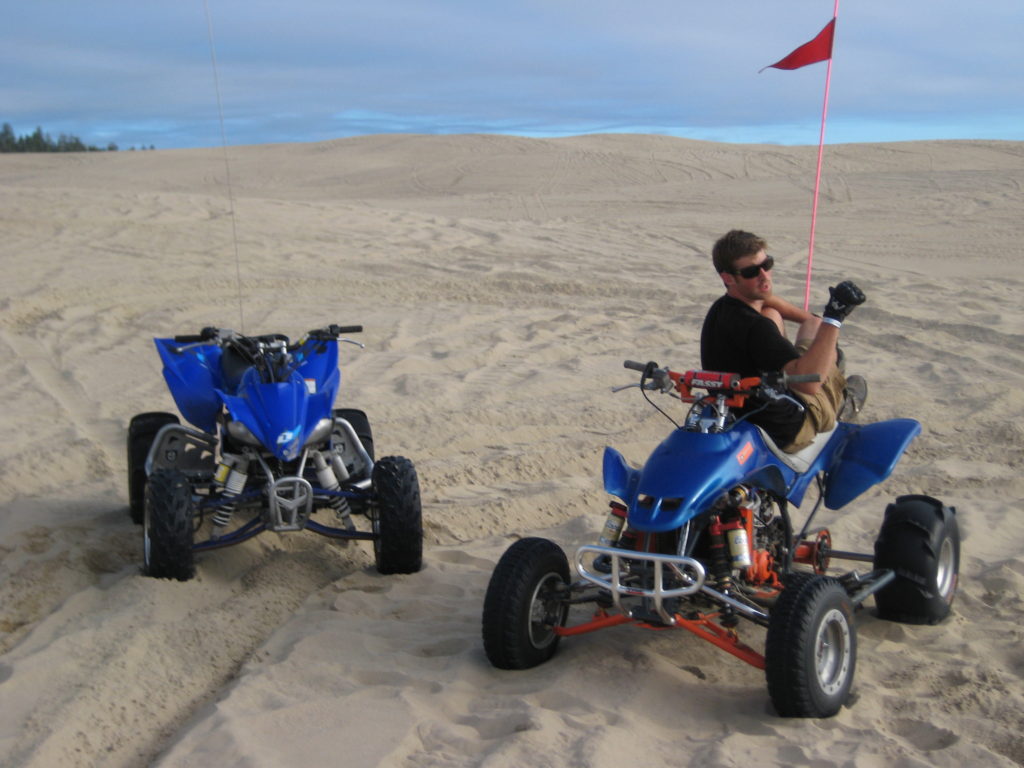
Here at Salient we are not only professional designers; we are also creators and makers. We have gone through the same idea and trouble-shooting process that many of our clients have gone through. An example is Ross Walker’s motorcycle project, during which he experienced first-hand the trial and error of building something. Along with Salient’s other engineers and designers, Ross knows how to tackle a problem to make a product better. Following is the story of his motorcycle, in his words.
Concept
“Frank” started as a frame from a Honda 400ex four-wheeler and an engine from a Yamaha yz426 dirt bike. The suspension was a variety of old parts found around the shop and some new parts. None of these components were designed to work together, but on their own they had proven track records. At the time of Frank’s creation, I worked for a motorcycle performance shop, and on my lunch break my coworkers and I would talk about the perfect bike. After many sketches and talks, it was time to build a proof of concept. The rough part about building a custom motorcycle is the product testing can be a little…rough.

First Ride
Engineers can spend months planning out a weight balance using computer simulations, but I took a more primitive approach by hanging my frame from the garage rafters from the point I wanted the center of gravity to be. For the next 3 months I spent every spare moment I had welding brackets, wiring, grinding and machining to coax this engine into its new home and suspension into its place. It was not pretty but I proved it could be done. My first ride was…rough. I had to rev it to the moon to get moving, and the bike wobbled and shook as I rocketed down the street. My victory drift in the driveway turned into a high side wreck flinging me straight up and straight down in front of my friends gathered to see me and my Frankenstein emerge from the garage.
I had a lot of work ahead of me, the bike was together and running but not safe at full speed. Nearly every component had to be tuned to fit me and my needs. I changed the gearing, set the suspension to my weight and riding style, and moved the exhaust farther from my leg. I had to replace the handlebars completely after my unsuccessful victory lap. A smooth trip up and down the road was my reward.

The Test
The test took place at my local stomping grounds on a winding trail through Oregon’s old growth trees. I started slowly over the rough terrain making suspension adjustments after every pass. As the day went on, my bike performed better and better. Because I was riding the machine, any failures were immediately obvious to me. The rear shock had an additional reservoir of oil, and I had run the lines in what I thought was a safe path. I was at top speed when my chain ate the line turning my shock into a springboard causing me to lose control, clipping a tree. The impact snapped the spindle and sent me flying through the air. My protective gear did its job, but for the next five miles I had a lot of time to think about what went wrong and how to improve. It was a very rough day of testing.
At this point there was some fine tuning to be done, but I couldn’t let that keep me from moving the project forward, and so it was time for cosmetics. I disassembled Frank and reevaluated every part through the lens of everything I had learned so far on this project. If a part was not beneficial to the design, I removed or upgraded it. I had every component cleaned, polished, and powder coated. Back in my shop, I carefully put Frank back together for what I hoped was the last time.

DuneFest
A freshly painted bike built from the ground up was my chariot at Oregon’s celebration of all dune riders. I enjoyed the bike compliments, but I got giddy when asked, “What is it, and how do I get one?” It had been a long journey of ups and downs to get to that point. Frank had thrown me to the ground many times, challenging me to give up, but in the end we lined up side by side with people from all walks of life that shared my passion to build and ride. For the next 1/8th mile our stories were told as we all started at the same place, but those that put in the work were rewarded for our time.
Ross Walker is part of the Salient Team as a mechanical designer. He continues to enjoy working on his vehicles.
